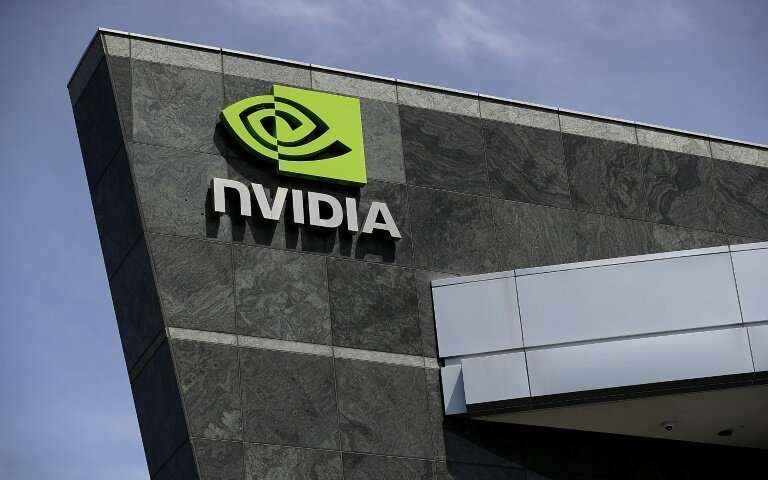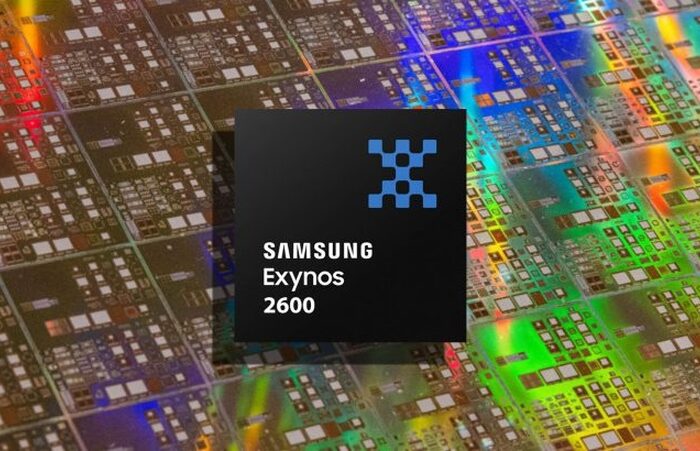Top Tech News Today, November 14, 2025

Top Tech News Stories Today — Your Quick Briefing on the Latest Technology News, Global Innovation, and AI-Driven Shifts Reshaping the Future
It’s Friday, November 14, 2025, and we’re back with your in-depth look at the most important tech stories shaping today’s world — from next-generation AI research tools and breakthrough data-center infrastructure to Big Tech strategy moves, cybersecurity escalations, venture-backed AI hardware bets, and frontier-energy milestones redefining global industries.
Whether you’re a founder, investor, operator, or tech enthusiast, this daily briefing keeps you ahead of the curve — no noise, no endless scrolling, just the news that matters and the signals shaping the decade.
Here’s your roundup of the latest tech news stories making waves across the global tech scene.
Latest Tech News Today
1.NotebookLM Update Adds Deep Research and Support for More Source Types
Google NotebookLM just received a major upgrade, with a new “Deep Research” mode that enables users to choose between quick or in-depth research styles. Deep Research builds a tailored research plan, browses hundreds of sources, and synthesizes a detailed, source-grounded report — all within the NotebookLM workflow.
In parallel, NotebookLM now supports a broader range of file types: Google Sheets for structured data analysis, Drive URLs, Microsoft Word (.docx) documents, PDFs, and even image uploads. The goal is to let professionals, students, and research teams collapse multiple tools into one platform.
Why it matters:
Research workflows are being fundamentally disrupted. For founders, analysts, and academic teams, this update means fewer context-switches between tools (notes → spreadsheets → documents → web). More importantly, it signals how mainstream productivity AI is evolving from being reactive (you ask, it answers) to proactive (it plans, executes, integrates). That shift opens opportunities for startups building knowledge-management layers, enterprise research platforms, and domain-specific “agentized” AI tools that plug into this new stack.
Source: Google Blog
2. Amazon, Microsoft Back Effort to Curb Nvidia’s Exports to China
Amazon has officially joined Microsoft in supporting the GAIN AI Act, a proposed U.S. legislation that would tighten export restrictions on Nvidia’s advanced AI chips to China. According to WSJ reporting cited by Reuters, the bill aims to close loopholes exposed after Nvidia released “China-compliant” GPU variants to bypass earlier controls.
Anthropic is also backing the measure — a rare moment of alignment between hyperscalers and AI labs on the geopolitics of compute. For Nvidia, this represents another escalation in the balancing act between regulatory pressure and massive international demand. For Washington, it is part of a broader effort to slow China’s progress in developing frontier models.
Why it matters:
Compute is now a geopolitical instrument. If passed, the GAIN AI Act could reshape global supply chains, fragment GPU markets by region, and spark new incentive programs for domestic chip manufacturing. For AI startups, this may tighten cloud capacity in some areas while lowering competition in others.
Source: The Wall Street Journal
3. Nvidia-Backed Firmus Raises A$500M to Accelerate Australia’s Project Southgate AI Infrastructure Push
Australian AI infrastructure company Firmus is raising A$500 million ($325M USD) to advance Project Southgate, its sovereign AI data infrastructure initiative. Backed by Nvidia and Ellerston Capital, this marks the firm’s second large funding round in as many months, strengthening speculation around a 2026 IPO.
Project Southgate aims to build high-performance compute clusters that give Australia domestic AI capabilities without relying solely on U.S. or Asian cloud providers. Nvidia’s involvement underscores its strategy to seed regional AI champions who can drive local GPU adoption.
Why it matters: As countries prioritize sovereign AI, infrastructure players like Firmus become essential intermediaries between hyperscalers, governments, and enterprises. This model — local infra, global GPUs — may become the default template for nations seeking regulatory control and domestic resilience.
Source: Reuters
4. d-Matrix Secures $275M Series C at $2B Valuation to Scale Its AI Inference Chip Platform
AI chipmaker d-Matrix has raised $275 million in Series C funding at a $2 billion valuation, continuing a wave of mega-financings targeting inference hardware. Backed by Temasek and Qatar Investment Authority, the company now has nearly $450 million in total funding.
d-Matrix focuses on power-efficient inference systems and says its hardware/software stack provides one of the highest performance-per-dollar options available for data-center inference. Customer interest is rising as hyperscalers confront the cost realities of deploying large models.
Why it matters: Training gets the headlines — but inference pays the bills. d-Matrix represents the broader shift toward silicon specialization as companies look to reduce cloud spending and model-serving overhead. If alternative inference chips succeed, we could see pricing pressure across GPU clouds and new competition in the power-hungry inference layer.
Source: TechStartups (via Bloomberg)
5. BlackRock and ACS Launch €2B Joint Venture to Build AI-Optimized Data Centers Across Europe
Spanish conglomerate ACS and asset management giant BlackRock are forming a €2 billion JV to build and operate data centers engineered for AI and high-density workloads. The partnership combines ACS’s construction capabilities with BlackRock’s institutional capital pipeline.
The focus will be on European markets where demand for GPU compute continues to spike. The move follows a trend of infrastructure funds treating data centers as the next generation of “digital utilities.”
Why it matters: This is institutional capital declaring that data centers — especially AI-ready ones — are the new power plants. Expect more sovereign wealth funds, pension funds, and private equity firms to pour billions into energy+compute infrastructure over the next two years.
Source: Reuters
6. Microsoft Selects New Jersey AI Hub to Pilot Its New Research-Grade Generative AI Platform
Microsoft is rolling out a high-end generative AI system specifically built for scientific and academic research — and Princeton’s New Jersey AI Hub will be one of only two global pilot locations. The platform will support fields from climate modeling to life sciences.
After six months of preparation, the system is entering live trials, giving researchers access to a frontier-scale environment without the budgets typically required to run such workloads independently.
Why it matters: This is a strategic move to embed Azure deeper into academic ecosystems. As AI becomes core to scientific breakthroughs, tech giants will increasingly act as infrastructure partners to universities — shaping research norms, workflows, and IP structures.
Source: The Daily Princetonian
7. OpenAI Pilots ChatGPT Group Chat in Japan, New Zealand, South Korea, and Taiwan
OpenAI has launched a limited regional pilot of ChatGPT group chats, enabling multi-user collaboration inside a single AI conversation.
The feature is being tested across four markets to evaluate UX, safety, and performance. If successful, group chats would position ChatGPT as a shared workspace — overlapping with Slack, Notion, Teams, and Google’s productivity tools.
Why it matters: This shifts ChatGPT from a personal companion into a collaborative operating system for teams and classrooms. It could fundamentally reshape SaaS categories built around messaging, documentation, and project management.
Source: TechCrunch
8. Rockwell Automation and Nvidia Launch Edge AI System for Industrial Operations
Rockwell Automation is partnering with Nvidia to launch an edge-based generative AI platform powered by Nemotron models, enabling real-time insights in low-bandwidth or offline industrial environments.
Target sectors include manufacturing, energy, and process industries where milliseconds matter and cloud latency is unacceptable.
Why it matters:
This represents the next phase of industrial AI: bringing frontier models to factory floors, where downtime translates to millions of dollars in losses. Expect a rise in safety, predictive maintenance, and control-system startups built on top of these edge environments.
Source: PR Newswire
9. Deutsche Bank Executive Warns There’s “No Playbook” for Evaluating AI-Driven Market Exuberance
The CEO of Deutsche Bank’s asset-management arm says there is “no playbook” for assessing whether today’s AI-driven market surge is a bubble. He acknowledged that productivity gains are real but warned valuations may be outrunning fundamentals — especially for semiconductor and cloud names concentrated in AI.
Why it matters: When major asset managers openly express uncertainty, it signals real volatility ahead. This affects IPO timing, late-stage valuations, and SaaS multiples across the ecosystem.
Source: Reuters
10. Global Investors Pull Back as Concerns Rise Over Stretched Tech and AI Valuations
Fresh data shows global equity fund inflows falling to a four-week low, driven largely by concerns that tech and AI valuations may be overheating. Investors are also weighing weaker labor-market indicators and upcoming Fed moves as they reassess risk appetite heading into year-end.
Why it matters: This is the macro backdrop founders should track: tighter risk appetite means slower mega-rounds, more scrutiny, and sharper pricing discipline in private markets.
Source: Reuters
11. CISA and FBI Issue New Guidance on Akira Ransomware Targeting SMBs and Critical Infrastructure
The US CISA, FBI, and global partners have issued updated threat intelligence on the Akira ransomware group, outlining new TTPs targeting small businesses and critical infrastructure alike. A companion analysis shows Akira has hit more than 250 organizations since March 2023, extracting over $42 million in ransom payments.
Why it matters: Ransomware hasn’t slowed — it has evolved. This advisory is actionable for tech teams: update VPNs, segment networks, and strengthen identity systems now, not later.
Source: CISA / InsideCyberSecurity
12. Washington Post Confirms Breach Impacting Nearly 10,000 Employees and Contractors
The Washington Post has confirmed a large-scale data breach tied to the Clop ransomware group, exposing sensitive information for nearly 10,000 current and former staff. Compromised data includes addresses and Social Security numbers — but not subscriber data.
Why it matters: This breach highlights how media organizations — despite strong cybersecurity budgets — remain vulnerable to supply-chain weaknesses and HR system exploits.
Source: Computing.co.uk
13. Europol’s Operation Endgame Dismantles 1,025 Malware Servers in Global Cybercrime Crackdown
Europol has taken down 1,025 malware servers in a sweeping operation targeting command-and-control systems, bulletproof hosting, and malware-as-a-service networks. The operation also resulted in arrests and domain seizures, though investigations remain active.
Why it matters: This is one of the most aggressive cybercrime infrastructure takedowns to date. Each shutdown server briefly tilts the balance toward defenders — giving enterprises time to patch and reinforce.
Source: Industrial Cyber / Europol
14. Anthropic Says Chinese State-Backed Hackers Used Claude AI in Global Espionage Campaign
Anthropic disclosed that a Chinese state-sponsored threat group abused Claude AI to support a large-scale cyber-espionage operation. Attackers used Claude to craft phishing lures, analyze stolen data, and automate intrusion tasks.
Why it matters: This is one of the clearest examples yet of AI being weaponized in live cyber campaigns. Expect tighter regulatory pressure on AI guardrails and audit requirements across the industry.
Source: The Times of India
15. Air Liquide Launches Industrial-Scale Ammonia Cracking Unit to Enable Global Hydrogen Distribution
Air Liquide has deployed the world’s first industrial-scale ammonia-cracking pilot unit, converting 30 tons of ammonia per day into hydrogen at the Port of Antwerp-Bruges.
The facility demonstrates how ammonia could serve as the backbone of global hydrogen logistics — similar to LNG today.
Why it matters: If scalable, ammonia cracking could unlock global hydrogen transport — accelerating decarbonization for heavy industry, shipping, and energy-intensive AI data centers.
Source: Air Liquide / Simply Wall St
Closing
That’s a wrap on today’s top stories shaping the global tech landscape — from next-generation AI research tools and billion-dollar infrastructure bets to major startup financings, cybersecurity escalations, industrial-edge breakthroughs, and the rising global race for compute, energy, and technological autonomy.
Stay tuned for tomorrow’s edition as we continue tracking the breakthroughs, policy shifts, and industry moves redefining how the world builds, secures, and powers the next generation of technology — and the founders pushing the frontier forward.
That’s your quick tech briefing for today. Follow @TheTechStartups on X for more real-time updates.




